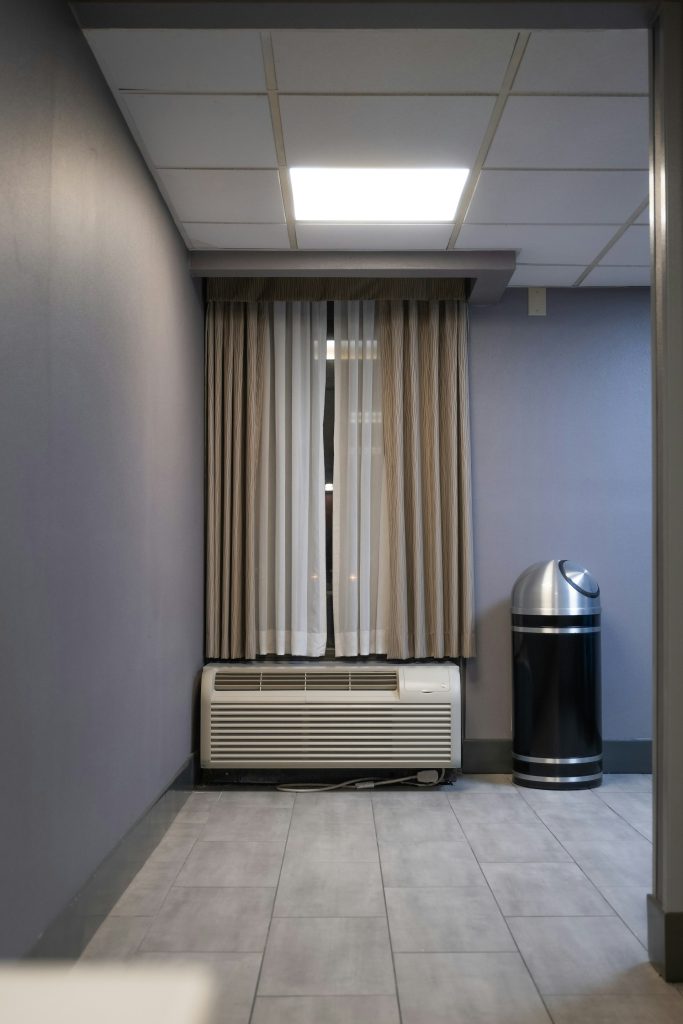Table of Contents
In today’s world, sustainability is more than just a buzzword—it’s a responsibility. Businesses across the UK are increasingly aware of their environmental impact and are keen to adopt greener practices. One of the significant contributors to a business’s energy consumption and carbon footprint is air conditioning. However, keeping your workplace comfortable doesn’t have to come at the cost of the planet. With thoughtful choices and smart strategies, you can maintain a cool environment while staying environmentally friendly.
If you’re considering ways to improve your commercial air conditioning system or wondering how to balance comfort with sustainability, this guide is for you. Here are practical and effective tips to keep your business cool and green.
1. Choose Energy-Efficient Commercial Air Conditioning Installation
When it comes to commercial air conditioning installation, the initial choice of system matters immensely. Opt for energy-efficient models that carry recognised certifications, such as the Energy Saving Trust’s recommendations or units with high Seasonal Energy Efficiency Ratio (SEER) ratings. These systems use less electricity to deliver the same cooling power, reducing both your energy bills and carbon footprint.
Modern commercial systems often incorporate inverter technology, which adjusts cooling output based on demand rather than running at full power all the time. This innovation can slash energy use significantly compared to older, conventional units.
Before installation, consult with a reputable air conditioning specialist who can assess your business space and recommend a system tailored to your needs. Poorly sized units either waste energy or fail to cool adequately, so professional advice is crucial.
2. Consider Using Portable Air Conditioning Units for Flexibility and Efficiency
Not all businesses require a central cooling system. In smaller or more flexible workspaces, a portable air conditioning unit can be an excellent green alternative. These units are compact, easy to install, and allow you to cool specific areas without wasting energy on unoccupied spaces.
Portable units also give you the flexibility to move cooling where it’s needed most, for example, a busy meeting room or a server room that tends to overheat. Because you only cool the areas in use, you save energy and reduce unnecessary emissions.
While portable units generally have a lower capacity than fixed commercial systems, choosing an energy-efficient model and using it strategically can be both environmentally and economically sensible.

3. Regular Maintenance is Key to Sustainability
An often-overlooked aspect of keeping your air conditioning green is regular maintenance. A well-maintained system runs more efficiently, consumes less energy, and lasts longer. Simple tasks such as cleaning filters, checking for refrigerant leaks, and servicing components ensure your system doesn’t work harder than necessary.
Neglecting maintenance can lead to inefficiencies, higher electricity use, and a greater environmental impact. Make it a priority to schedule routine servicing with professional technicians who can spot and fix potential problems early.
4. Implement Smart Thermostats and Zoned Cooling
Technology can be a powerful ally in sustainability. Installing smart thermostats allows you to precisely control your cooling system and adapt it to the building’s occupancy patterns. These devices can learn your routine and adjust temperatures automatically, reducing energy waste during off-hours.
Zoned cooling is another effective method where different areas of your business are cooled independently. For instance, staff areas may require different temperatures than storage or server rooms. By cooling only occupied zones, you prevent energy loss and improve overall system efficiency.
5. Maximise Natural Cooling and Improve Insulation
Before turning to mechanical cooling, consider how your building design can help keep things cool naturally. Simple measures such as installing blinds or curtains, using reflective window films, or planting shade trees around your premises can reduce heat gain.
Improving insulation is another vital step. Well-insulated walls and roofs prevent cool air from escaping and block heat from entering, allowing your air conditioning system to work less intensively.
By combining natural cooling strategies with your air conditioning, you reduce reliance on energy-hungry systems, lowering your carbon footprint.
6. Use Environmentally Friendly Refrigerants
Air conditioning units rely on refrigerants to cool the air, but not all refrigerants are created equal. Some older types, like HCFCs and CFCs, are harmful to the ozone layer and contribute heavily to global warming.
Modern systems use refrigerants with lower Global Warming Potential (GWP), such as R32 or R410A, which are less damaging to the environment. When choosing a new commercial air conditioning installation or portable air conditioning unit, ensure the refrigerant used is eco-friendly.
If you have an older system, consult with your maintenance provider about options to replace or upgrade refrigerants to greener alternatives.

7. Encourage Energy-Saving Habits Among Staff
Technology and equipment are only part of the equation. Encouraging your employees to adopt energy-conscious habits can significantly enhance your business’s environmental performance.
Simple steps include turning off air conditioning units when rooms are unoccupied, closing windows and doors to keep cool air in, and setting thermostats to a reasonable temperature (typically around 24°C in summer). Promoting awareness about energy use helps foster a culture of sustainability.
8. Consider Renewable Energy Sources to Power Your Cooling
For businesses serious about sustainability, integrating renewable energy sources can take your green efforts further. Solar panels installed on your premises can generate electricity to run your air conditioning system, reducing reliance on fossil fuels.
While the initial investment might be higher, many UK businesses benefit from government incentives and long-term energy savings. Combining renewable energy with efficient commercial air conditioning installation creates a powerful synergy for environmental responsibility.
9. Dispose of Old Equipment Responsibly
When upgrading or replacing your air conditioning systems, avoid simply discarding old units in landfill. Many components, including metals and refrigerants, can be recycled or safely disposed of by authorised companies.
Responsible disposal prevents harmful chemicals from leaking into the environment and supports a circular economy. Ask your supplier or installer about recycling programmes or take-back schemes they offer.
Final Thoughts
Keeping your business cool doesn’t have to mean harming the planet. By making smart choices—whether it’s opting for energy-efficient commercial air conditioning installation, using a portable air conditioning unit where appropriate, or embracing natural cooling methods—you can strike the perfect balance between comfort and sustainability.
Every step you take reduces energy consumption, cuts costs, and demonstrates your commitment to environmental stewardship. In the long run, investing in green cooling solutions not only benefits the planet but also enhances your business’s reputation with customers and employees alike.
Ready to make your business cooler and greener? Start by consulting an expert to explore the best air conditioning options tailored to your needs and sustainability goals. The future is green—and comfortably cool.

